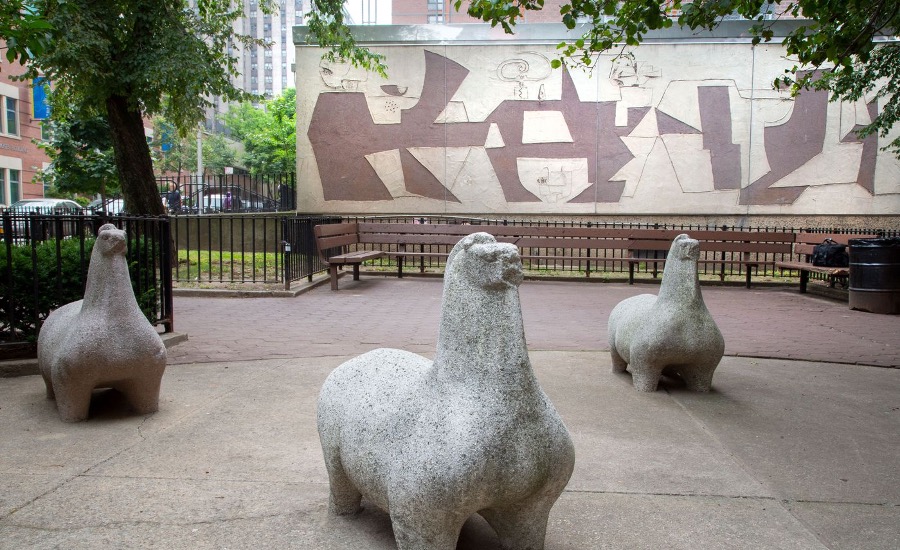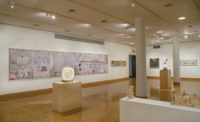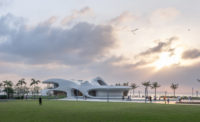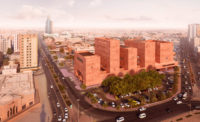Costantino Nivola's Concrete Horses Removed in Manhattan

The concrete horses designed by Costantino Nivola in 1964 for the plaza at Manhattan’s Stephen Wise Towers
Photo © The Irwin S. Chanin School of Architecture Archive, The Cooper Union. Lea Bertucci, photographer
The concrete horses designed by Italian modernist sculptor Costantino Nivola in 1964 for the plaza at Manhattan’s Stephen Wise Towers have been suddenly and haphazardly removed by New York’s housing authority, triggering an outcry among architecture critics and historians.
Nivola, who worked closely with architects including Eero Saarinen, Josep Lluis Sert, and Richard Stein on many institutional works, created the 18 horses in a circular design to enliven the Upper West Side housing complex’s recreation area. Flanking the tree-covered arrangement on 91st Street are the red brick apartment buildings managed by the New York City Housing Authority (NYCHA).
Last week, The New York Times reported that Nivola’s statues had been sawed off earlier this month by NYCHA to repair a standpipe that runs directly underneath the site, resulting in dozens of concrete nubs poking out from the ground where legs once stood. A spokesperson of NYCHA also told Curbed that the horses are “intact” and are at a storage facility on-site. The rough and ready removal provoked an uproar among the architecture and preservation communities, including Docomomo’s Liz Waytkus and Paul Goldberger in response to a tweet by the Paul Rudolph estate.
While Nivola’s statues have not been entirely destroyed, the design will never be the same. It is undetermined if the figures will be rebuilt as they were, and where they were, given their current state. Plans are for Nivola’s work to be reinstalled in 2022 as part of a landscape redesign that will include a new playground, but visuals and drawings are yet to be unveiled.
Last year, the Cooper Union organized an exhibition to celebrate and draw awareness to Nivola’s many concrete creations, often designed in tandem with new buildings as freestanding artworks or wall reliefs. He collaborated with a number of leading architects to enliven public projects, including numerous sculptures at Saarinen’s Morse and Stiles colleges at Yale and two murals inside Boston’s Hurley building, designed by Paul Rudolph and Shepley Bullfinch Richardson & Abbott, which has been under threat of demolition for years despite ongoing efforts by Docomomo and other preservationists. The massive murals, which include depictions of a family dinner alongside the U.S. coat of arms, were designed by Nivola in 1969 for the government building using the ancient technique, fresco sgraffito, where he scratched drawings across the cement-covered wall by hand. (Just down the road from the Hurley Building is Boston City Hall, an iconic brutalist landmark by Kallmann McKinnell & Knowles which was also under threat but now has been restored.)
The Sardinian-born Nivola, who lived on the East End of Long Island, created 21 public projects in New York City, and at least 16 survive—now one down from the 17 noted in the Cooper Union exhibit a year ago—as well as a number of works elsewhere in the U.S.






